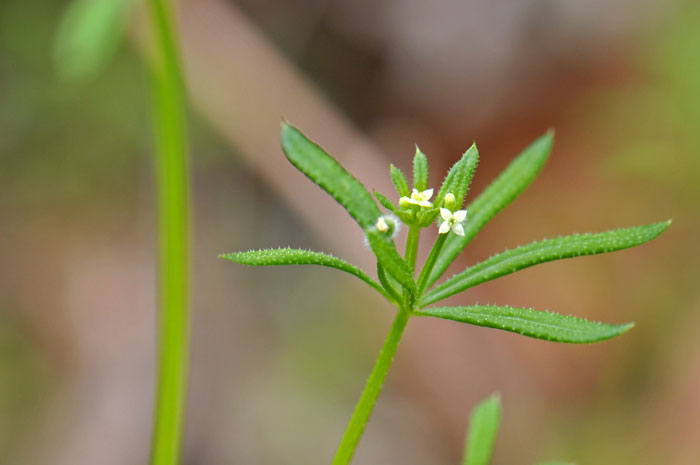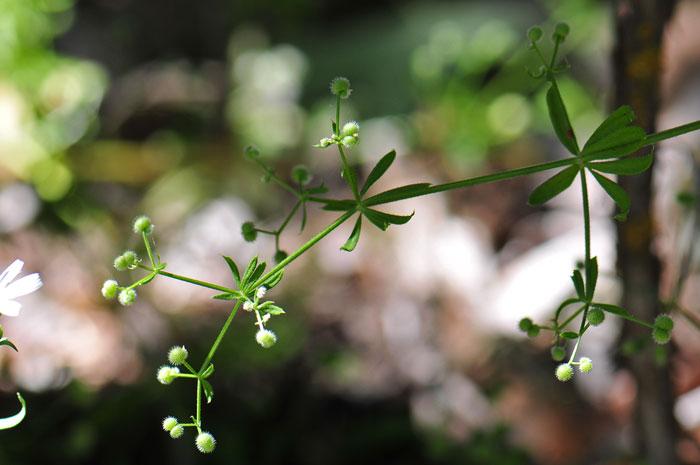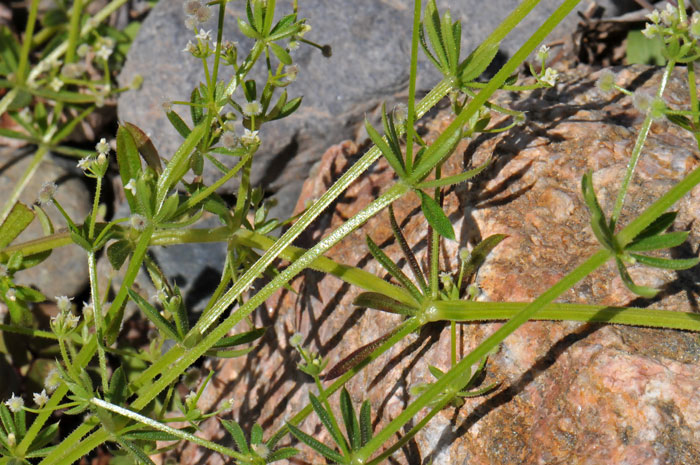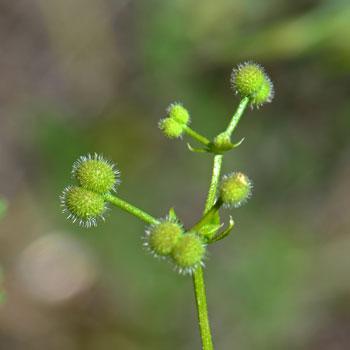Galium aparine, Common Bedstraw





Scientific Name: Galium aparine
Common Name: Common Bedstraw
Also Called: Bedstraw, Catchweed Bedstraw, Cleavers, Cleaverwort, Goose Grass, Scarthgrass, Sticky-willy, White Hedge
Family: Rubiaceae, Coffee, Madder or Bedstraw Family
Synonyms: (Galium agreste var. echinospermum, Galium aparine subsp. spurium, Galium aparine var. aparine, Galium aparine var. echinospermum, Galium aparine var. intermedium, Galium aparine var. minor, Galium aparine var. vaillantii, Galium asperum, Galium spurium, Galium spurium var. echinospermum, Galium spurium var. vaillantii, Galium vaillantii)
Status: Native; possible introduced from Europe.
Duration: Annual
Size: Up to 2 feet or so, 3 feet maximum.
Growth Form: Forb/herb, vine; climber, prostrate or low growing, plants sticky with small hooked prickles, plants very brittle and break easily.
Leaves: Green; shiny green, leaves in whorls 6 to 8, some leaves with petioles but upper leaves sessile; leaves narrowly oblanceolate.
Flower Color: White; small white flowers, 1 or 2 from whorled leaf axils on branchlets; flowers bisexual; corolla rotate; fruit is a nutlet with tiny hairs used to catch a ride from passing animals.
Flowering Season: March to July.
Elevation: 2,000 to 8,000 feet; 100 to 4,500 feet in California.
Habitat Preferences: Grassy, partial shade, often along streams, weedy in gardens in California.
Recorded Range: Galium aparine is found throughout most of North America. It also occurs in Baja California and northern Mexico. In Arizona it is found throughout most of the state with few or now records in Cochise, Greenlee and Santa Cruz counties.
North America & US County Distribution Map for Galium aparine.
U.S. Weed Information: In North America Galium aparine can be weedy or invasive according to the following authoritative sources: Weeds of Kentucky and adjacent states; Weeds of the Northeast; Weeds of Nebraska and the Great Plains; Weeds of the United States and Canada and Weeds of the West. Plants included here may become weedy or invasive.
Invasive/Noxious Weed Information: No information available.
Wetland Indicator: In North America Galium aparine has the following wetland designations: Alaska, FAC, FACU; Arid West, FACU; Atlantic and Gulf Coastal Plain, FACU; Eastern Mountains and Piedmont, FACU; Great Plains, FACU; Midwest, FACU; Northcentral & Northeast, FACU; Western Mountains, Valleys, and Coast, FACU.
FAC = Facultative, occur in wetlands and non-wetlands
FACU = Facultative Upland, usually occur in non-wetlands, but may occur in wetlands.
Threatened/Endangered Information: No information available.
In Arizona there are 14 species of Galium, in California there are 47 species, Nevada has 19 species, New Mexico has 13 species, Texas has 21 species, Utah has 18 species. All data is approximate and subject to taxonomic changes.
Comments: Galium aparine is widely distributed across the United States and much of Canada. This species may have originated in Europe and became naturalized in North America. It is considered an introduced species in Greenland.
Also see in Southwest Desert Flora, Starry Bedstraw, Galium, stellatum.
Galium aparine has been used as a dermatological, urinary and kidney aid and several other purposes by North American indigenous peoples.
Cherokee Drug, Laxative, Infusion taken to 'move bowels.
Chippewa Drug, Dermatological Aid, Cold infusion of stems rubbed on skin troubles.
Iroquois Drug, Dermatological Aid, Compound infusion of plants used as wash for poison ivy and itch.
Micmac Drug, Antihemorrhagic, Parts of plant used for persons spitting blood and gonorrhea.
Ojibwa Drug, Urinary Aid, Infusion of whole plant used for gravel, urine stoppage and allied ailments.
Penobscot Drug, Kidney Aid, Compound infusion of plant taken for kidney trouble.
See ethno-botanical uses at Native American Ethnobotany, University of Michigan, Dearborn.

